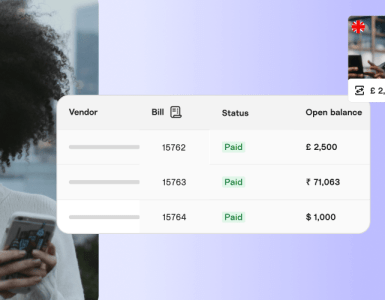As offices shut down and freelancing boomed due to the Covid-19 outbreak, many people have realized the perks of working from home. There’s more time for family, no day-to-day commute, and reduced expenses. Whether or not the pandemic ends soon or in the upcoming months, we believe remote work will be the future.
However, while remote work is convenient, the lack of face-to-face communication is a downside for your clients. It’s harder to persuade clients through online meetings as compared to in-person conversations. More importantly, pitching an idea is also easier in person where you can present eye-catching presentations.
So, how can freelancers maintain a loyal client base while working remotely? Here are a few of the best practices that you can follow in order to foster customer loyalty in a remote work environment.
1. Schedule Meetings in Co-Working Spaces
As nationwide lockdowns loomed, many offices have shut down in favor of remote work. Similarly, millions have turned to freelancing. For weeks, we’ve communicated with clients virtually through Zoom calls, social media chats and emails—but there’s no need to stay indoors 24/7.
Most coworking spaces have launched socially distanced workstations so that employees and freelancers alike can conduct meetings in a safe environment. These areas are also equipped with WiFi, visual presentation equipment and private booths that are conducive for high-stakes business deals.
Most of these spaces also integrate coworking software – making it even more convenient for their members to manage the space, book conference rooms or organize events.
For many, a change of scenery is crucial to set the mood for risky client meetings or in-depth conversations. Convincing your clients to accept your pitch is faster with a face-to-face discussion and a cup of brewed frappuccino on hand. Alternatively, a slow Wi-Fi or an inconvenient software can dissuade clients from opting to your proposals.
2. Provide Referrals For Clients
The pandemic has plunged the world into a depressing recession. Countless businesses have filed for bankruptcy and engaged in aggressive cost-cutting measures. You may even be struggling to maintain your current client base and fear losing your main sources of revenue.
Nevertheless, keeping a client entails proving your worth and providing value in the current economic climate.
Besides keeping clients happy, you can also give referrals to help their business stay afloat. If your client is a consulting firm, then let entrepreneurs in your network learn about their services. Similarly, those that work with SaaS marketing agencies may refer colleagues that need help with B2B marketing.
A successful referral is invaluable and will also ensure clients keep you in mind for future projects.
3. Get Feedback
When you work remotely, it’s difficult to gauge a client’s reaction to your product or service.
Rather than playing the guessing game, ask clients for feedback about your output. Understanding your clients’ preferences ensures faster turnaround times and fewer complications or revisions on your end.
For instance, if you’re providing blog posts to clients, you can send the initial draft through Google Docs. Afterward, ask for comments or suggestions to guarantee client satisfaction. Take the time to document a client’s preferences for future reference.
If you have multiple clients, you can even send a survey to gauge your strengths and weaknesses. Keep in mind that this works better if you ask for feedback regularly—annually, at the end of each quarter, or at the end of every project.
This ensures clients remain satisfied and continue to use your services in the foreseeable future.
4. Use Collaborative Tools
Are you giving a virtual presentation about your marketing campaign plans for the next quarter? Use screen-sharing software like Zoom, Skype or CrankWheel. Will you deliver a multi-stage content marketing project for several months? Use Trello or ClickUp to organize deadlines and enable clients to monitor your progress.
Most clients will prefer a specific collaborative tool to communicate with employees or freelancers. Instead of asking clients to use a specific tool, consider using their preferred project management tool and communication channel. Again, it can be challenging to keep up with multiple clients with different project management tools. That’s why you should keep a list of the collaborative tools that they use. Fortunately, most project management tools have similar features, so it’s not too difficult to learn a new app or software.
5. Keep Clients Satisfied
There are many considerations to keep in mind when working with clients remotely, especially during the ongoing Covid-19 outbreak. However, it all boils down to keeping your clients satisfied. By providing referrals, asking for feedback, and using collaborative tools, you can deliver superb products and services and build a collaborative remote working relationship.
As more days are spent at home, it can be difficult to set the mood for high-stakes business meetings. That’s exactly why you should book meetings in co-working spaces to have in-person conversations and avoid misunderstandings. Not only that, but a change of scenery can enable businesses to foster closer relationships in a safe environment.





